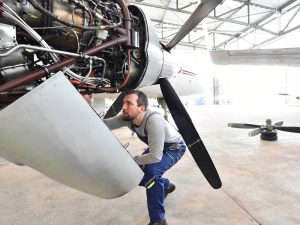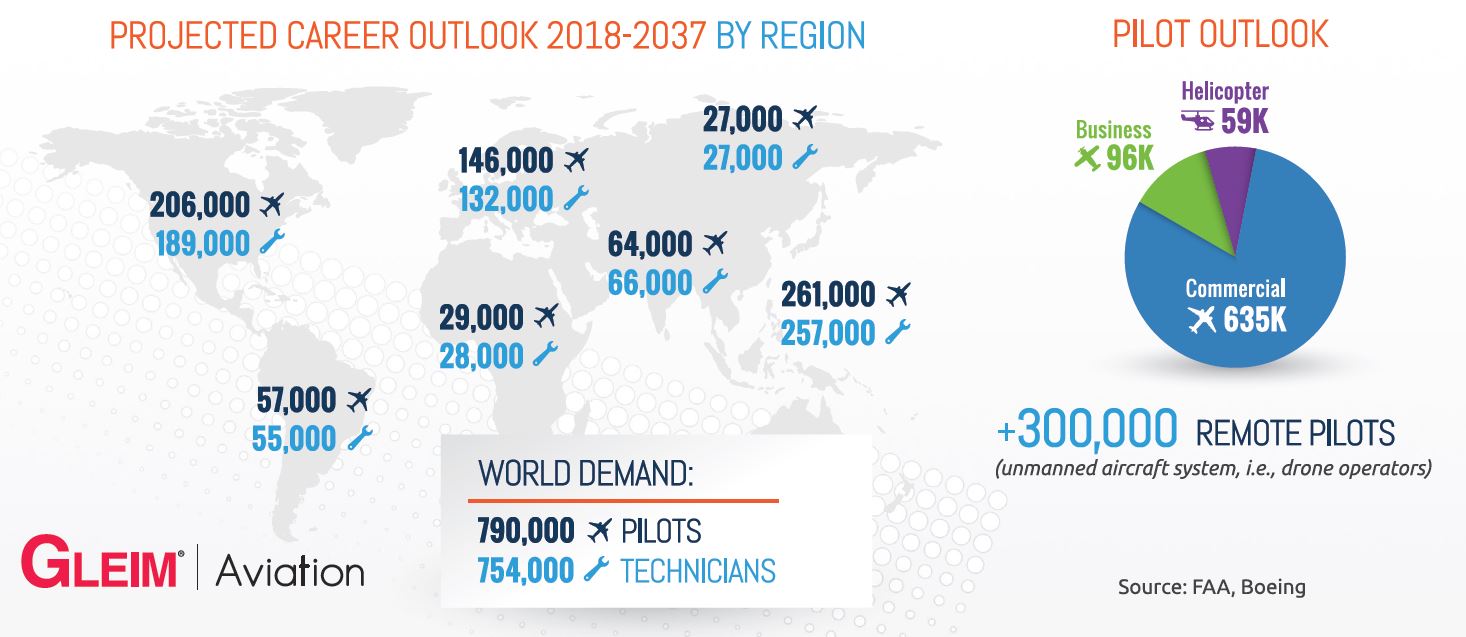 While the world takes notice of the massive shortages forecast for pilots, a similar story is the pending shortage of support personnel. However, we remain optimistic because the good news is that this is an amazing opportunity. While a budding workforce laments the lack of good-paying entry-level jobs, the aviation industry is screaming, “Look over here!”
While the world takes notice of the massive shortages forecast for pilots, a similar story is the pending shortage of support personnel. However, we remain optimistic because the good news is that this is an amazing opportunity. While a budding workforce laments the lack of good-paying entry-level jobs, the aviation industry is screaming, “Look over here!”
Corporate-sponsored programs are cropping up for the technical training classes to meet the needs of the industry. Increasingly, high school students are being exposed to technical careers that do not require a college education. A major upside in the aviation field is that you can become career ready without amassing hefty student loan debt. If you are passionate about airplanes, detail oriented, and have a mechanical aptitude, then a career as an aviation maintenance technician (AMT) is a solid choice. AMT skills are highly valued for keeping aircraft safe, in good working order, and operating efficiently. The projected need for technicians is 754,000 through 2037.
Another opportunity in aviation is security. In the post-9/11 world, the significance of aviation safety security is paramount. The added layers of security and situational awareness require added levels of personnel, and all of that equates to more job opportunities. Every customer-facing employee at your local flight school must complete Flight School Security Awareness Training annually. The Gleim TSA Security Awareness Training course is available for free to help meet these training needs.
 Becoming a remote pilot is another way to stay grounded while capitalizing on the need for employees in aviation. If you like the idea of being a “pilot” but prefer to stay out of the flight deck, flying drones can be the perfect fit. There is a projected need for more than 300,000 remote pilots by 2037 per the FAA.
Becoming a remote pilot is another way to stay grounded while capitalizing on the need for employees in aviation. If you like the idea of being a “pilot” but prefer to stay out of the flight deck, flying drones can be the perfect fit. There is a projected need for more than 300,000 remote pilots by 2037 per the FAA.
Our Learn To Fly booklet gives readers a glimpse of the flying side of aviation, additional career opportunities, and a peek at the growing Remote Pilot (drone) industry. This booklet is great for high schools, flight schools, Civil Air Patrol, EAA Young Eagles, and other youth programs that provide insight to potential students and parents.
 My own experiences and career as a Marine Corps pilot and flight instructor have taken me around the world, from North of the Arctic Circle to the Equator, more than a dozen countries, and even the very rewarding opportunity to help evacuate refugees from war-torn Liberia. While the pilots and crew who fly are obviously the final cog in the mechanism of executing a mission, remember there is a critical support team allowing those flights to take place in the first place. Without them, the aircraft never leaves the ground.
My own experiences and career as a Marine Corps pilot and flight instructor have taken me around the world, from North of the Arctic Circle to the Equator, more than a dozen countries, and even the very rewarding opportunity to help evacuate refugees from war-torn Liberia. While the pilots and crew who fly are obviously the final cog in the mechanism of executing a mission, remember there is a critical support team allowing those flights to take place in the first place. Without them, the aircraft never leaves the ground.
Gleim will be showcasing our STEM resources for teachers who are bringing aviation into the classroom at the AOPA STEM Symposium in Denver, Colorado November 10-12, 2019. To learn more about how aviation careers are being presented to high school students and learn more about STEM Aviation, check out the agenda or come by and see us at the conference!
Written by Bruce Blashka, Aviation Training Consultant


